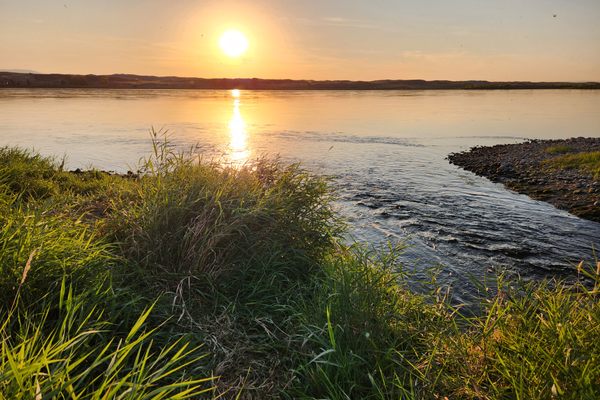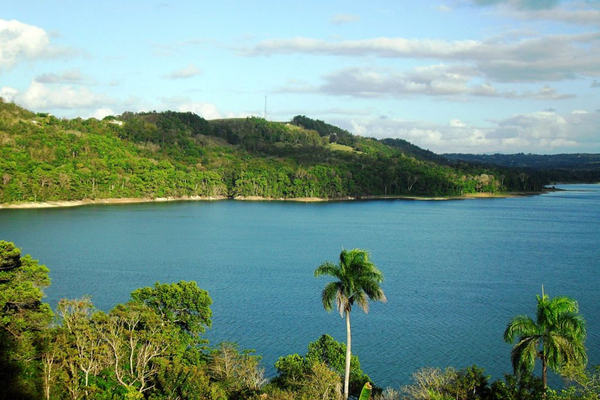About
Water has always been a point of contention in the arid U.S. Southwest. In 1922, an agreement on water allotment between the seven states in the Colorado River Basin was nearly reached. Every state agreed on how to divvy up the water in the river except Arizona, which held out and refused to sign the Colorado River Compact.
Tensions came to a head around a decade later, in 1934, when construction began on the Parker Dam across the Colorado River. The western bank of the river was in California and the eastern bank in Arizona, and the purpose of the dam was to provide water to the growing population of Los Angeles. But Arizona was still unhappy with how negotiations ended on the water allotment of the Colorado River, and Governor Benjamin Baker Moeur decided that a dam partially constructed in Arizona to divert water to California was a bridge too far.
Governor Moeur dispatched six soldiers of the Arizona National Guard to the site, who confirmed that construction was indeed taking place on the Arizona side of the river. Arizona's Attorney General advised the governor that the dam could not be constructed on Arizona's soil without their consent, and at that, Moeur declared martial law and called for a much larger contingent of National Guard troops to be sent to the dam site to stop the construction.
One hundred National Guard soldiers, armed with rifles and machine guns, were loaded into wooden ferry boats and sent up the Colorado River to Parker Dam. Newspapers mockingly called the dispatched soldiers the "Arizona Navy," but this name was embraced by Governor Moeur and the owner of the ferry boats, Nellie T. Bush, was officially decreed to be the fleet's admiral.
Upon reaching the construction site, the ferry boats got entangled in cables around the dam and had to be freed by Californian workers. Despite this ignominious start, the deployment of the Arizona Navy was successful. The troops occupied the construction site on Arizona's side of the river while Californian and federal officials scrambled to figure out what to do.
At this point, U.S. Secretary of the Interior Harold Ickes was furious with Governor Moeur, but declared a stop to the construction nonetheless. The Department of the Interior sued Arizona and the case quickly went up to the U.S. Supreme Court. To the astonishment of the federal government and the state of California, the Supreme Court sided with Arizona, stating that the dam had not been specifically authorized by Congress and that California could not build the dam on Arizonan soil without their permission.
California and the Bureau of Reclamation were now forced to negotiate with Arizona if the dam was to be completed. Arizona allowed the construction of the Parker Dam to continue in exchange for a portion of the water held in the reservoir, as well as federal funding of their own planned water projects along the Gila River.
Despite other setbacks, including a fire and a labor strike, the dam was completed in 1938, creating the 45-mile long Lake Havasu reservoir behind it. Reaching 235 feet below the riverbed, the Parker Dam ranks today as the deepest dam in the world. In 1944, Arizona relented and signed the Colorado River Compact in exchange for additional federal funding for more dams and irrigation projects. Nellie T. Bush passed away in 1963 and was admitted into the Arizona Women's Hall of Fame in 1982, partially in recognition of her commanding of the Arizona Navy during the Parker Dam standoff.
Related Tags
Know Before You Go
The dam also functions as a bridge across the Colorado River, allowing for vehicle traffic between Arizona and California.
Published
May 28, 2019
Sources
- https://en.wikipedia.org/wiki/Parker_Dam
- https://en.wikipedia.org/wiki/Benjamin_Baker_Moeur
- https://kjzz.org/content/11126/did-you-know-arizona-navy-deployed-1934
- https://www.earthmagazine.org/article/november-10-1934-arizona-declares-war-against-california-parker-dam
- https://en.wikipedia.org/wiki/Nellie_T._Bush






























